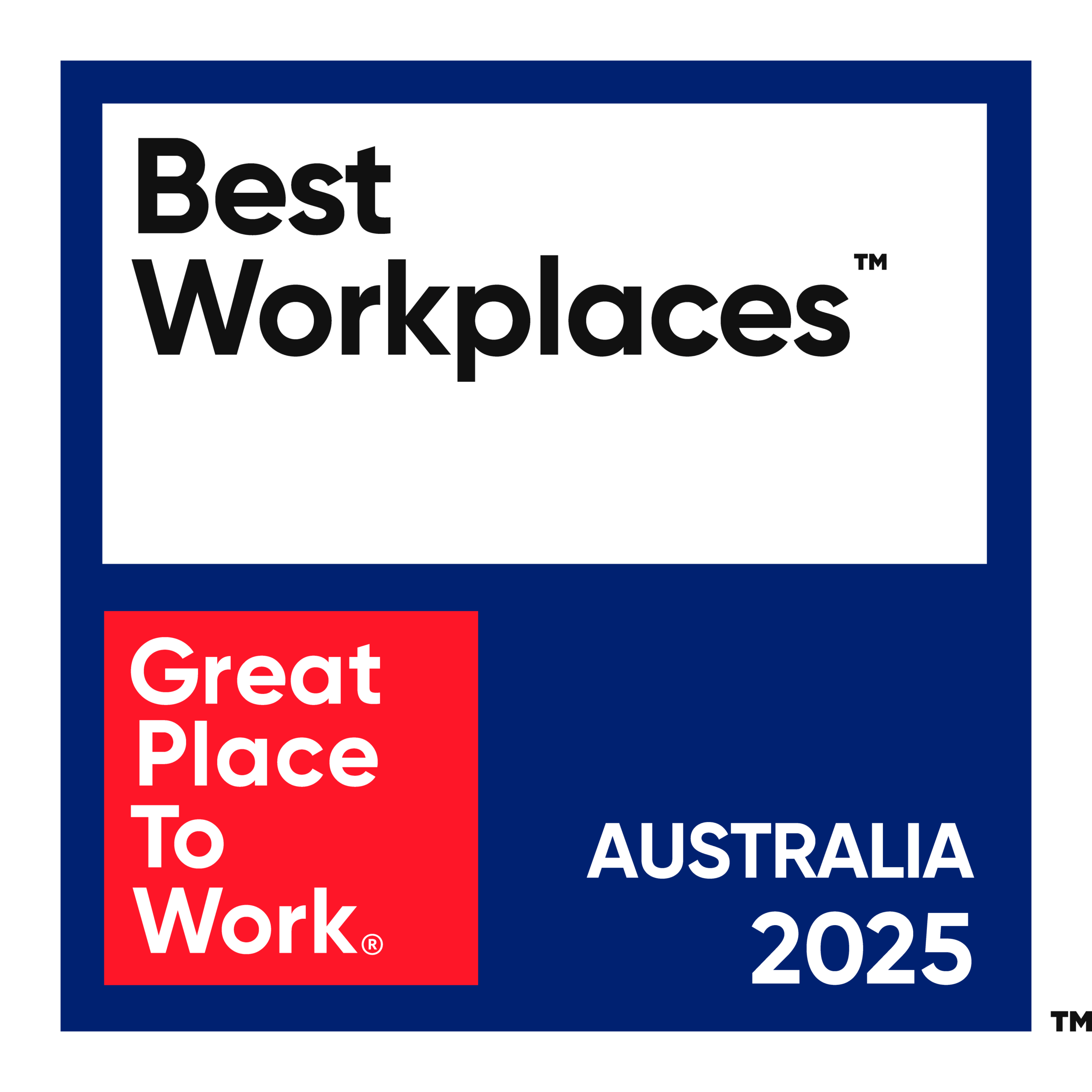Home > Why a strong EVP is more than just a compelling HR tool
Why a strong EVP is more than just a compelling HR tool...
Why a strong EVP is more than just a compelling HR tool…
Different organisations provide value to their people in various ways, from personal development, lucrative incentives, and engaging cultural rituals, to surprise and delights. However, focusing solely on these individual efforts misses the broader picture. A well-rounded Employee Value Proposition (EVP) encompasses all of these aspects and more.
Many consider an EVP as merely a retention tool, which at face value makes sense given the true cost of replacing an employee. According to the Australian HR Institute, this cost is close to 1.5 times the employee’s annual salary. However, a strong EVP not only creates a comprehensive and compelling offering for people, it serves as a backbone for engagement and innovation, and ultimately delivers better outcomes for your customers, team members or audiences.
At Be Challenged, we’ve developed a framework to help you consider the broader role and value of your EVP:
– Purpose: alignment of value through culture, CX and communications
– People: the unifying and empowerment of your team
– Product: developing a culture that stimulates coherent innovation
– Pride: brand advocacy that starts from within
– Profile: the interconnectedness of your EVP and brand proposition
– Profit: the business outcomes of rocksolid culture
By applying this framework, we can start to unlock the full potential of your EVP and drive significant improvements in employee satisfaction and business performance.
Purpose
Workplace culture should reflect your company’s values and purpose. There is a real power in unity and true alignment within your teams. The goals that your organisation holds should be mirrored in the benefits, opportunities, and culture you offer to your people. For example, if sustainability is a company value, it should practice and encourage sustainable habits within the workplace and among employees.
Likewise, if your company values innovation, it should provide teams with opportunities for creative thinking and problem-solving. This empowerment leads to a more dynamic and forward-thinking organisation, where people are motivated to contribute their best work. If you have the autonomy to explore new ideas and the support to implement them, innovation flourishes naturally.
When people understand their role in the bigger picture, they are more engaged and committed to achieving the company’s objectives. This connection helps people understand how important they are to the overall success of the business.
People
While building team unity is the central tenet of our organisation, we focus on much more than team building. To create high-performing teams, you need to give equal focus to individual empowerment.
Think of your business as having three essential components: oxygen (employees), water (customers), and food (shareholders). You can go without water for a few days, but you cannot survive 5 minutes without oxygen. If your employee metrics are lacking, you may achieve short-term goals of revenue, but you are depriving the business of a sustainable future. Ensuring that your teams are well-supported and valued is the key to long-term success.
Effective communication is crucial for empowerment and overall well-being. Understanding and addressing individual needs through open lines of communication can significantly reduce burnout and improve job satisfaction. Offering dynamic work arrangements help cater to personal needs and enhance work-life balance.
Monetary incentives and talent management are essential, but so are clear expectations, rewards, and recognition. When people know what is expected of them and are recognised for their achievements, they are more likely to feel valued and motivated. This works even better when personal development strategies are put in place to further empower and engage people.
It’s also important you consider the role of stay interviews as part of your broader employee engagement plan. At Be Challenged, we call these connection plans. While our clients’ connection plans map out rituals for connection within their organisations, they also focus on individual development, in which stay interviews play a crucial role.
Team happiness isn’t just a nice-to-have; it’s a must-have. It’s about looking at the big picture, where each person’s well-being adds up to a strong, vibrant organisation.
Product
Team members who are in tune with your company values and value are likely to be more invested in the products and services you offer. By empowering people in a unified direction, you create a space for people to push the boundaries, ask questions and innovate your products to be more compelling and coherent.
When you feel aligned with your business, you’re more engaged and better equipped to provide exceptional customer experiences. There is real and measurable success that comes from understanding the deep interconnectivity between being employee-centric and customer-centric.
Pride
Consider your current situation: how likely are you to recommend your workplace to a friend? Our personal networks are stronger than ever nowadays. When people are proud to work somewhere, they’ll tell everyone. This pride empowers them to reach out to others and share their positive experiences.
Employee referral programs benefit from this pride, resulting in reduced costs and time spent during the hiring process. Referred candidates are often of higher quality because they are likely to align themselves with their friend’s values and expectations. This leads to higher employee engagement and better cultural fit.
Peer-to-peer vetting is a strong driving factor in converting potential talent. It provides a glimpse into the culture beyond what a corporate business packages for the public. Potential talent will do their own research and investigate your business on social media. A strong sense of pride among your team can significantly enhance the recruitment process.
Profile
Your company’s public presence, perception, and representation are critical components of your EVP. Your EVP and brand proposition should be tightly bound, creating a cohesive story, no matter the audience. Your retention efforts should feed into your brand and vice versa. They should flow and speak to the intent of what you do as a business.
Your EVP is representative of your culture and to a large degree brand marketing provides a window into the culture of an organisation, so your EVP becomes an important part of your business’s message to market.
Brought to life through marketing and communications, your EVP should be an enticing and accurate representation of your company. Compelling content and meaningful engagement with your audience should span all touchpoints. From your website to events, from social media to word of mouth, your profile is an important part of conveying your EVP.
The relationships you have with other businesses provide great insight into how you are perceived externally. Aligning yourself with businesses that share your values is important for your EVP. These partnerships enhance your reputation and reflect positively on your organisation.
Profit
Another area to consider is the world of tenders. Presenting proposals often hinges on the talent you put forward. In a highly competitive market, potential clients need assurance that their team will remain stable throughout the project. A strong EVP helps instil confidence in your partners, reducing the risk of changing hands and missed deadlines.
When people feel valued and aligned with the company’s vision, they are more likely to stay, reducing turnover costs and maintaining productivity. This stability allows the company to focus on growth and innovation rather than dealing with the disruptions of high employee turnover. A compelling EVP will attract top talent, giving your company a competitive edge in the job market.
Your EVP goes beyond simply recruiting and retaining employees; it strengthens your organisation’s philosophy and culture. Aligning your EVP with your core values and business goals not only attracts and retains top talent but also drives engagement, innovation, and profitability. By reframing the recruitment process as an achievement of growth rather than a constant need to replace departing staff, you foster a sense of mutual respect and collective success, making employees proud of where they work.
If you’re eager to enhance your talent retention strategies and build a more resilient culture, please don’t hesitate to get in touch.
Thanks for reading,
Oliver Sheer
Be Challenged | Managing Director





